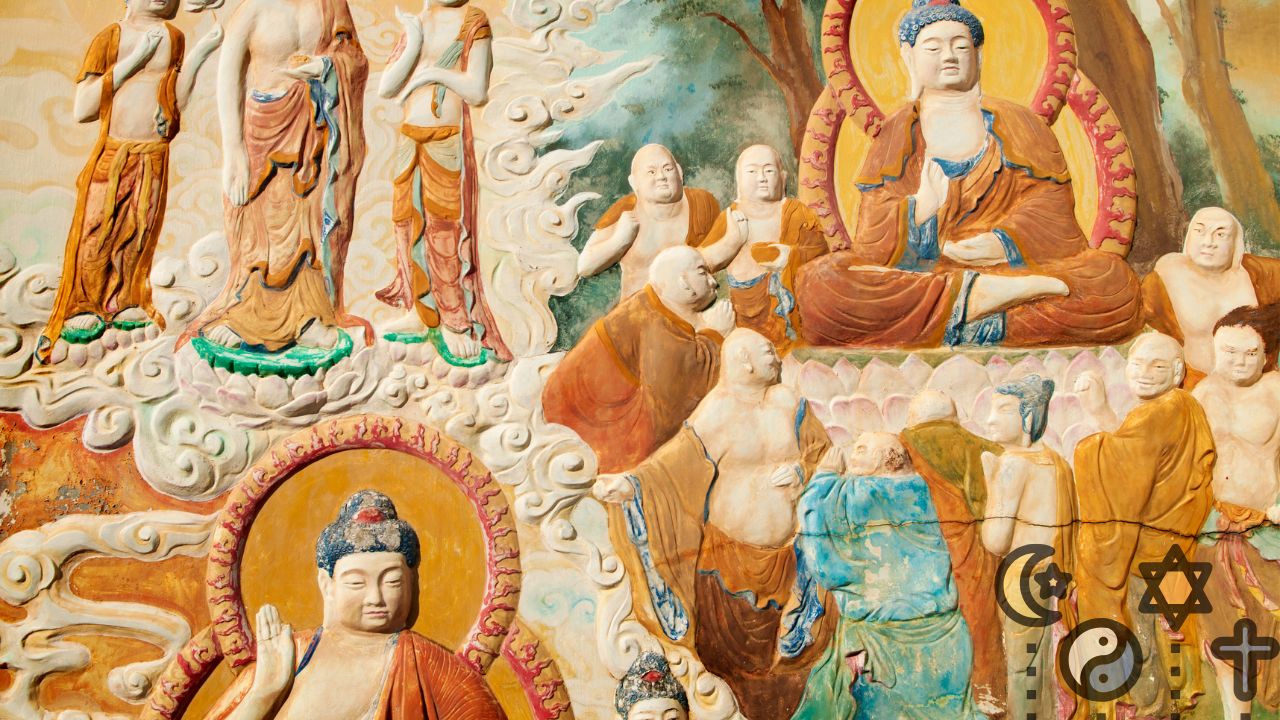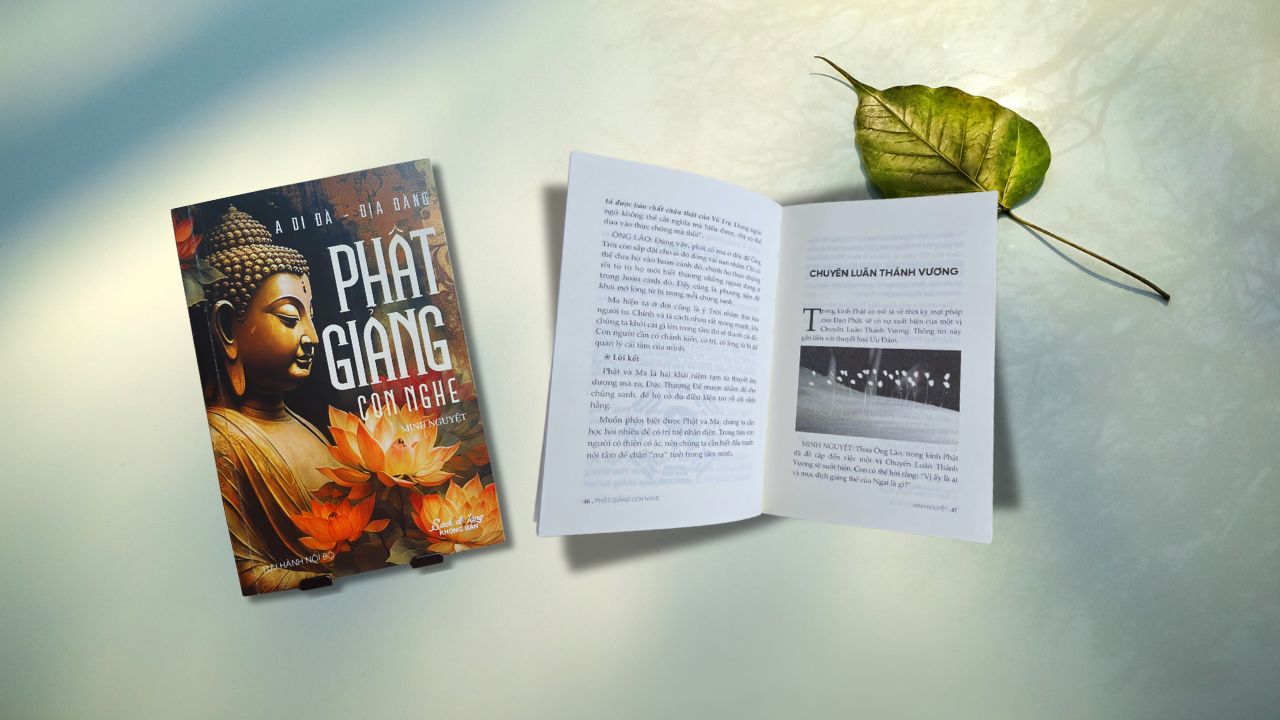In the vast teachings of Buddhism, Dhāraṇī holds a unique and profound significance. Often misunderstood as mere mantras, Dhāraṇī serves as a bridge between wisdom and protection, carrying deep spiritual power. But what exactly is Dhāraṇī, and how does it function within Buddhist practice? This article explores the origins, meanings, and roles of Dharani in Buddhism.
What Is Dhāraṇī?
The term Dhāraṇī (Sanskrit: धारणी, Pali: Dhāraṇī) can be translated as “something that holds or retains”. Unlike mantras, which are short and primarily serve as invocations, Dhāraṇī are longer incantations that contain deep meanings, often recited for protection, purification, and the cultivation of merit.
Dhāraṇī are believed to hold spiritual power that helps practitioners attain wisdom, overcome obstacles, and ward off negative influences. They are often recited by monks and lay practitioners as a means of accumulating merit and invoking the blessings of enlightened beings.
The Hidden Meaning Behind the Term Dharani
Let’s explore the hidden meaning of the term “Dhāraṇī” through the Vietnamese language. In Vietnamese, it is translated as “Đà La Ni”. By analyzing each component of this term, we can uncover a deeper understanding of its significance.
- The word “Đà” represents Caodaism (Cao Đài), a religion originating in Vietnam, because “Đà” is a shortened form of “Đài” in the Vietnamese name “Đạo Cao Đài”.
- The word “La” represents Daoism (Đạo Lão), a religion originating in China. “La” is a shortened form of “Lão” in the Vietnamese name “Đạo Lão”.
- The word “Ni” symbolizes Buddhism of Shakyamuni Buddha. “Ni” is the hidden part of “Mâu Ni” in the Vietnamese name of Shakyamuni Buddha: “Thích Ca Mâu Ni”.
Thus, Dhāraṇī implies that the Buddha and the divine beings encourage sentient beings to master the teachings of the three religions: Caodaism, Daoism, and Buddhism.
The combination of these elements gives Dhāraṇī the meaning of “Total Retention”, referring to the comprehensive retention and mastery of the teachings from these three religions, which can then represent all religions in the world. Therefore, to gain a comprehensive and profound understanding of the universe and human life, one should study and synthesize the wisdom from these three religions.
Additionally, “Total Retention” is rendered into Vietnamese as “Tổng Trì”, in which “Tổng” means “to synthesize all”, while “Trì” means “to retain”. Therefore, “Tổng Trì” means to retain all the information and secrets in the scriptures, and to encode them through the Dhāraṇī language.
The book: The Buddha Teaches Once MoreOrigins and History of Dhāraṇī
The concept of Dhāraṇī is rooted in early Mahayana Buddhism, appearing in various scriptures and sutras. Some of the most well-known Buddhist texts containing Dhāraṇī include:
- The Great Compassion Dhāraṇī (Mahākaruṇā Dhāraṇī) – Associated with Avalokiteśvara (Guanyin), recited for compassion and protection.
- The Uṇālambana Dhāraṇī – Found in the Ullambana Sutra, chanted to liberate beings from suffering.
- The Heart Sutra Dhāraṇī – The famous “Gate Gate Pāragate Pārasamgate Bodhi Svāhā,” symbolizing enlightenment.
- The Lankavatara Dhāraṇī – Contained in the Lankavatara Sutra, associated with the Yogācāra school of Buddhism.
Over time, Dhāraṇī were widely used across China, Japan, Tibet, and Southeast Asia, where they became essential components of esoteric Buddhist traditions.
The Difference Between Dhāraṇī and Mantras
While both mantras and Dhāraṇī are chanted in Buddhist practice, there are key distinctions:
| Feature | Dhāraṇī | Mantra |
|---|---|---|
| Length | Long and complex | Short and concise |
| Purpose | Protection, purification, accumulation of merit | Invocation, meditation focus |
| Meaning | Often has deep meaning encoded in its structure | Can be seed syllables with vibrational power |
| Example | Great Compassion Dhāraṇī | “Om Mani Padme Hum” |
While mantras are powerful sound vibrations focused on concentration and devotion, Dhāraṇī function as longer spiritual formulas that invoke blessings and deeper understandings of the Dharma.
Functions and Benefits of Reciting Dhāraṇī
Practitioners believe that reciting Dhāraṇī can:
- Protect Against Negative Forces – Dhāraṇī are often recited to dispel evil, misfortune, and harmful influences.
- Enhance Spiritual Growth – Chanting them purifies negative karma and generates good merit.
- Promote Wisdom and Enlightenment – Some Dhāraṇī help practitioners deepen their understanding of Buddhist teachings.
- Aid in Healing and Well-being – Certain Dhāraṇī, like the Medicine Buddha Dhāraṇī, are recited for physical and mental healing.
- Assist the Deceased – In some traditions, Dhāraṇī are chanted to help guide the souls of the departed to a better rebirth.
How to Practice Dhāraṇī Recitation
To practice Dhāraṇī effectively, follow these steps:
- Prepare a Sacred Space – Find a quiet place for meditation and recitation.
- Set an Intention – Dedicate your practice to a noble cause, such as world peace or personal enlightenment.
- Recite with Devotion – Pronounce each syllable clearly and focus on the meaning.
- Combine with Visualization – Imagine the blessings and protective energy surrounding you.
- Regular Practice – Daily repetition helps cultivate spiritual discipline and deepens understanding.
Conclusion
Dhāraṇī holds a special place in Buddhist traditions, serving as a spiritual tool for protection, wisdom, and transformation. More than just a collection of syllables, Dhāraṇī embodies the power of the Dharma, guiding practitioners toward enlightenment. By understanding and practicing Dhāraṇī, one can deepen their spiritual journey and connect with the vast wisdom of the Buddha.
Would you like to explore a specific Dhāraṇī in more detail? Let us know your thoughts!




